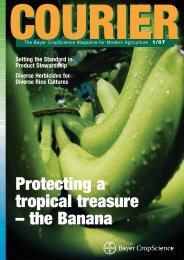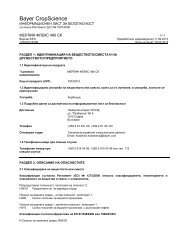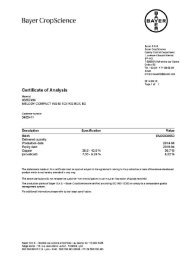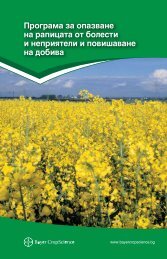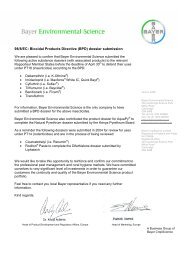Potatoes⦠- Bayer CropScience
Potatoes⦠- Bayer CropScience
Potatoes⦠- Bayer CropScience
You also want an ePaper? Increase the reach of your titles
YUMPU automatically turns print PDFs into web optimized ePapers that Google loves.
Phytophthora<br />
infestans<br />
is becoming increasingly<br />
aggressive<br />
The fungal pathogen Phytophthora infestans is increasing its hold<br />
on potato crops in Europe. In recent years, a wide range of new<br />
pathotypes has emerged through generative (sexual) reproduction,<br />
allowing the disease to become more aggressive and more<br />
damaging. This is clear from data collected by Euroblight, the<br />
European knowledge network for Phytophthora infestans. Potato<br />
researcher and Phytophthora specialist Dr. Ir. Huub Schepers of the<br />
PPO Research Centre in Lelystad (NL) outlines the development of<br />
the disease and indicates how it can be controlled.<br />
At the beginning of the 1970s, only one<br />
mating type (A1) of Phytophthora infestans<br />
was present in Europe. This meant<br />
that the pathogen could only reproduce<br />
asexually (vegetatively) at that time. The<br />
life-cycle was therefore quite stable and<br />
predictable, so it was relatively easy to<br />
control the disease effectively. This situation<br />
changed when, halfway through the<br />
1970s, a second mating type (A2)<br />
entered Europe from Mexico, allowing the<br />
fungus to start reproducing sexually (A1 x<br />
A2) as well. Initially, type A2 was found<br />
locally, mainly in the Netherlands and<br />
Scandinavia: but by now, in 2008, both<br />
18 COURIER 1/08





